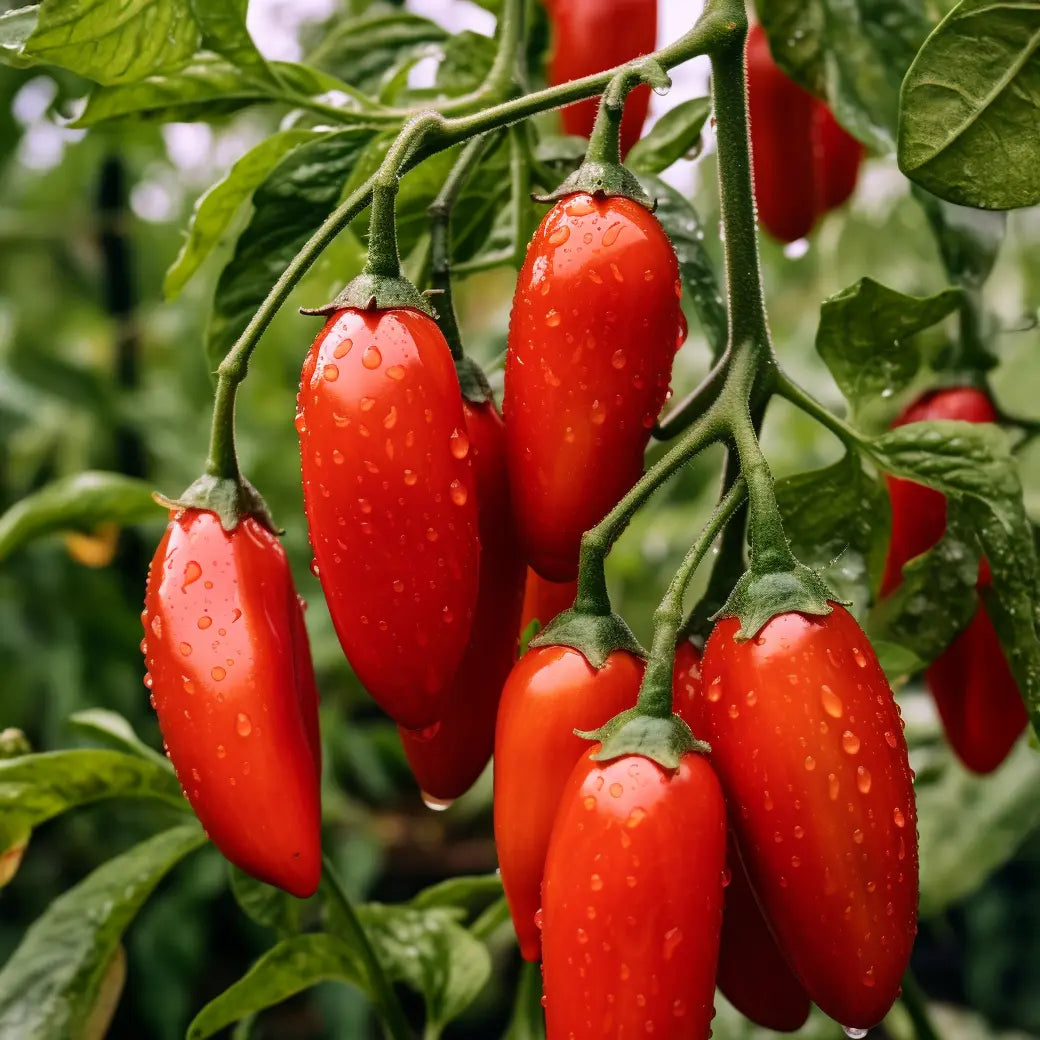Tips for Feeding Tomatoes, Chiles, and Other Heavy Feeders
Tomatoes, chiles, cucumbers, cabbages, squashes, and other heavy-feeding crops need a nutrient-rich diet to thrive, produce abundant fruit, and maintain healthy foliage. Feeding these plants is like fuelling an athlete — the right nutrients, at the right time, are key to peak performance. In addition to primary nutrients, smart fertilisation includes natural boosters like silicon dioxide, which strengthens plant cell walls — much like calcium fortifies human bones — increasing resistance to stress, drought, and disease. Meanwhile, trace elements such as copper and zinc act as powerful root stimulants ("Root Booster"), supporting strong underground growth and nutrient uptake. With the right fertilisers and feeding strategy, you’ll see the difference in every leaf and harvest.
1. Start with Healthy Soil
The foundation of any successful garden begins with nutrient-rich soil. Before planting, amend your garden beds with organic, peat-free compost or well-rotted manure from an organic source to provide a base of organic matter and nutrients. This not only improves soil fertility but also enhances its structure, ensuring better water retention and aeration.
Healthy soil begins with a good base of compost. You can read more here about incorporating both compost and GARDEN GOLD liquid organic fertilisers into your gardening routine as an effective way to maximize plant health.
2. Use Fertilisers Designed for Heavy Feeders
Heavy feeders like tomatoes and chiles benefit from fertilisers tailored to their needs. Look for options with a balanced nutrient profile that includes:
- Nitrogen (N) for leafy growth.
- Phosphorus (P) to support flowering and fruiting.
- Potassium (K) for overall plant health and resilience.
Many gardeners also use a tomato-specific fertiliser to meet the unique needs of these plants. Since we grow many types of chiles (20+ varieties) and primarily San Marzano tomatoes at GARDEN GOLD ORGANICS, we developed our GARDEN GOLD - Tomato & Chile formula for this purpose.
3. Feed Regularly During the Growing Season
Tomatoes and chiles require consistent feeding to sustain their rapid growth and fruit production. Apply liquid fertiliser every week, and at the height of the growing season, GARDEN GOLD - Tomato & Chile formula can be applied every three days.
Be mindful not to over-fertilise, as this can lead to excessive foliage growth at the expense of flowers and fruit.
4. Focus on the Root Zone
Apply fertilisers directly to the soil around the base of your plants, where roots can absorb the nutrients efficiently. Avoid splashing fertilisers on the leaves, as this can cause leaf burn or promote disease.
5. Incorporate Foliar Feeding for a Boost
In addition to soil feeding, foliar sprays can provide a quick nutrient boost during critical growth phases. GARDEN GOLD - Sea-Prime formula contains micronutrients like iron, magnesium and calcium which are particularly beneficial, especially for tomatoes prone to blossom end rot. Apply foliar feeds early in the morning or late in the afternoon to prevent leaf burn and maximise nutrient absorption.
6. Water Consistently
Feeding heavy feeders is most effective when paired with proper watering. Keep the soil evenly moist but not waterlogged. Dry soil can stress plants and limit nutrient uptake, while overly wet conditions may wash away fertilisers before they can be absorbed.
7. Adjust Feeding During Fruiting
Once your tomatoes, chiles, or other heavy feeders begin fruiting, GARDEN GOLD - Tomato & Chile Formula supplies your plants with the necessary amounts of phosphorus and potassium. These nutrients support robust fruit development and ripening.
8. Mulch to Retain Moisture and Nutrients
A layer of organic mulch, such as straw or shredded leaves, around the base of your plants helps retain soil moisture and regulate temperature. Mulch also reduces nutrient loss from evaporation and erosion.
9. Watch for Nutrient Deficiencies
Keep an eye on your plants for signs of nutrient deficiencies, such as:
- Yellowing leaves (indicating nitrogen deficiency).
- Blossom end rot (caused by calcium deficiency).
- Poor flowering (a sign of phosphorus deficiency, or a lack of wind or insect activity).
Address issues promptly with targeted fertiliser applications or soil amendments.
10. Rotate Crops Each Year
To prevent nutrient depletion and reduce the risk of soil-borne diseases, avoid planting tomatoes, chiles, or other heavy feeders in the same spot year after year. Practice crop rotation by planting less demanding crops in the same area the following season.
Final Thoughts
Feeding tomatoes, chiles, and other heavy feeders may seem like a lot of work, but with the right approach, you’ll be rewarded with healthy plants and bountiful harvests. By starting with rich soil, using GARDEN GOLD - Tomato & Chile formula, and maintaining consistent care, you can ensure your garden thrives all season long.

Leave a comment
All comments are moderated before being published.
This site is protected by hCaptcha and the hCaptcha Privacy Policy and Terms of Service apply.